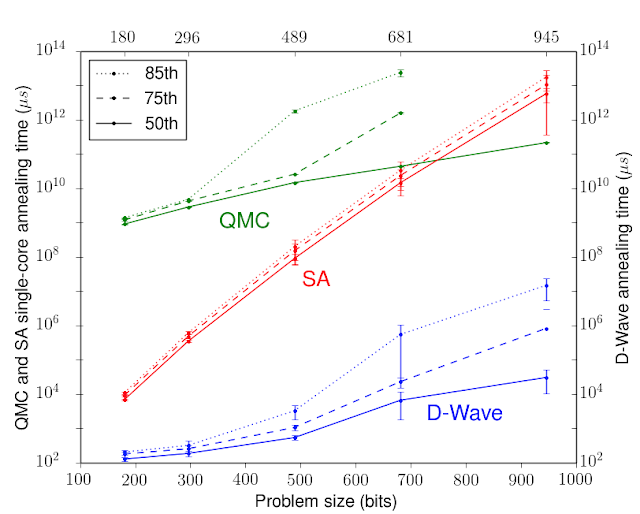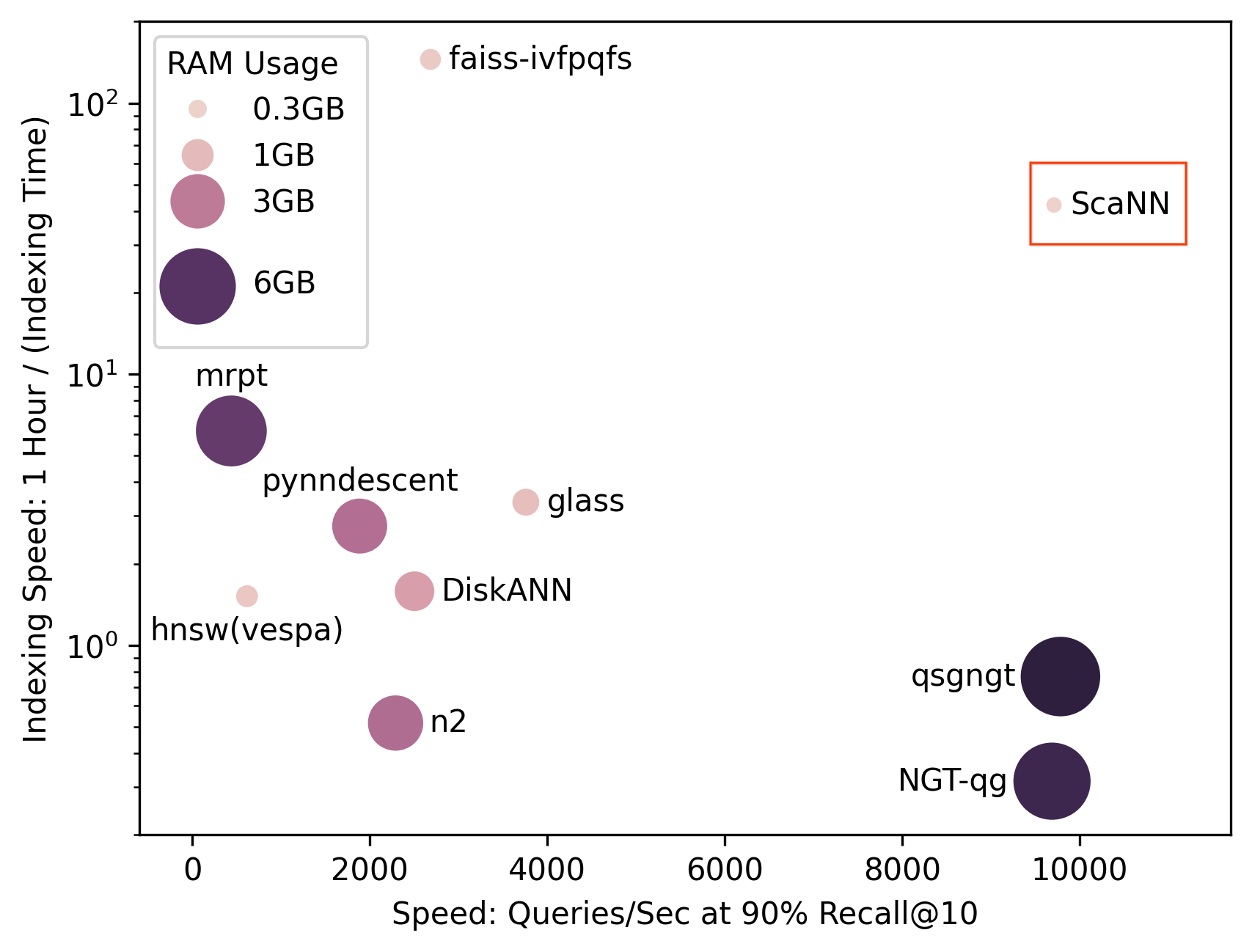
When can Quantum Annealing win?
December 8, 2015
Posted by Hartmut Neven, Director of Engineering
During the last two years, the Google Quantum AI team has made progress in understanding the physics governing quantum annealers. We recently applied these new insights to construct proof-of-principle optimization problems and programmed these into the D-Wave 2X quantum annealer that Google operates jointly with NASA. The problems were designed to demonstrate that quantum annealing can offer runtime advantages for hard optimization problems characterized by rugged energy landscapes.
We found that for problem instances involving nearly 1000 binary variables, quantum annealing significantly outperforms its classical counterpart, simulated annealing. It is more than 108 times faster than simulated annealing running on a single core. We also compared the quantum hardware to another algorithm called Quantum Monte Carlo. This is a method designed to emulate the behavior of quantum systems, but it runs on conventional processors. While the scaling with size between these two methods is comparable, they are again separated by a large factor sometimes as high as 108.
quantum hardware group is working on these improvements which will make it easier for users to input hard optimization problems. For higher-order optimization problems, rugged energy landscapes will become typical. Problems with such landscapes stand to benefit from quantum optimization because quantum tunneling makes it easier to traverse tall and narrow energy barriers.
We should note that there are algorithms, such as techniques based on cluster finding, that can exploit the sparse qubit connectivity in the current generation of D-Wave processors and still solve our proof-of-principle problems faster than the current quantum hardware. But due to the denser connectivity of next generation annealers, we expect those methods will become ineffective. Also, in our experience we find that lean stochastic local search techniques such as simulated annealing are often the most competitive for hard problems with little structure to exploit. Therefore, we regard simulated annealing as a generic classical competition that quantum annealing needs to beat. We are optimistic that the significant runtime gains we have found will carry over to commercially relevant problems as they occur in tasks relevant to machine intelligence.
For details please refer to http://arxiv.org/abs/1512.02206.
-
Labels:
- Algorithms & Theory
- Quantum



